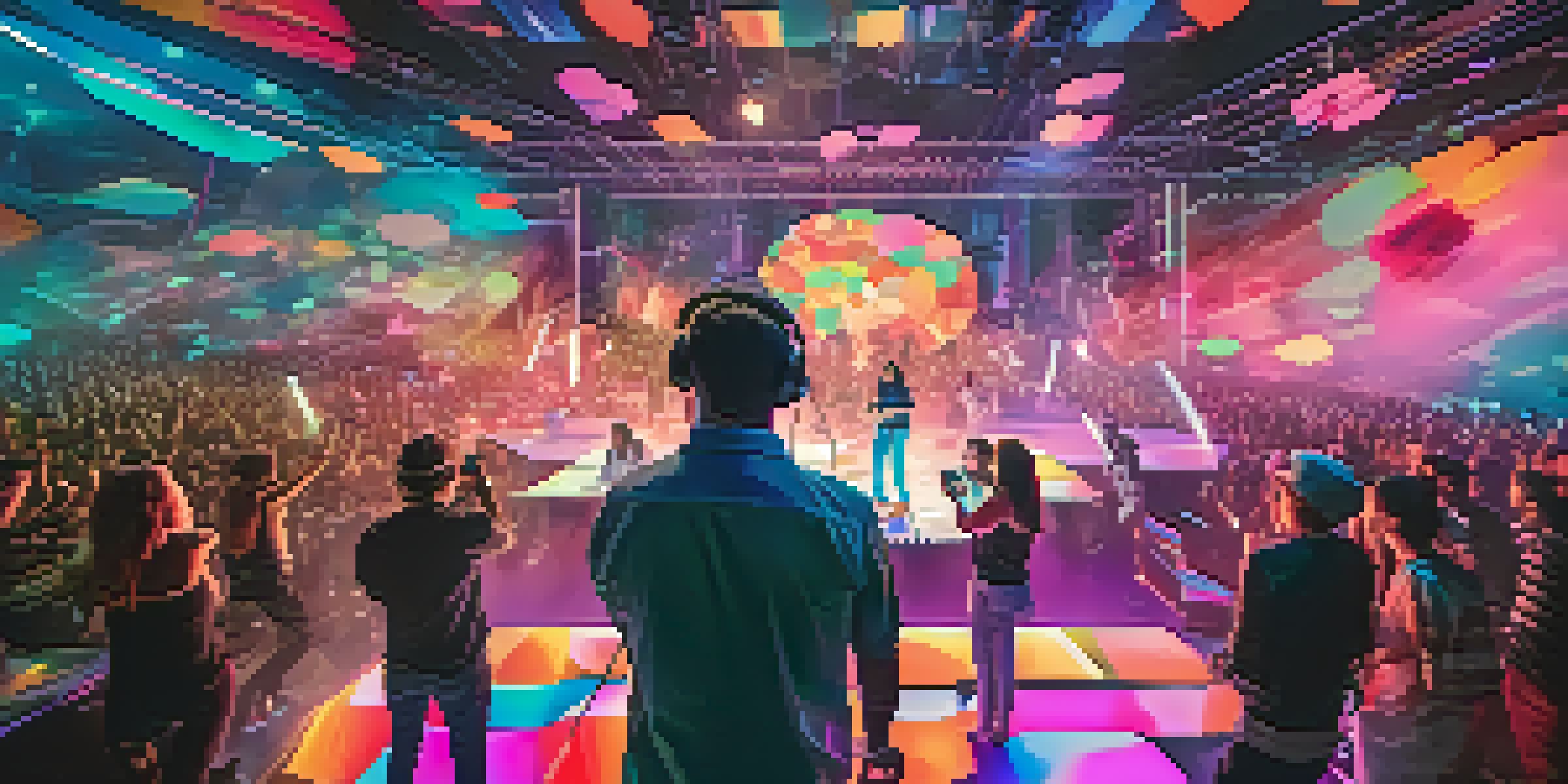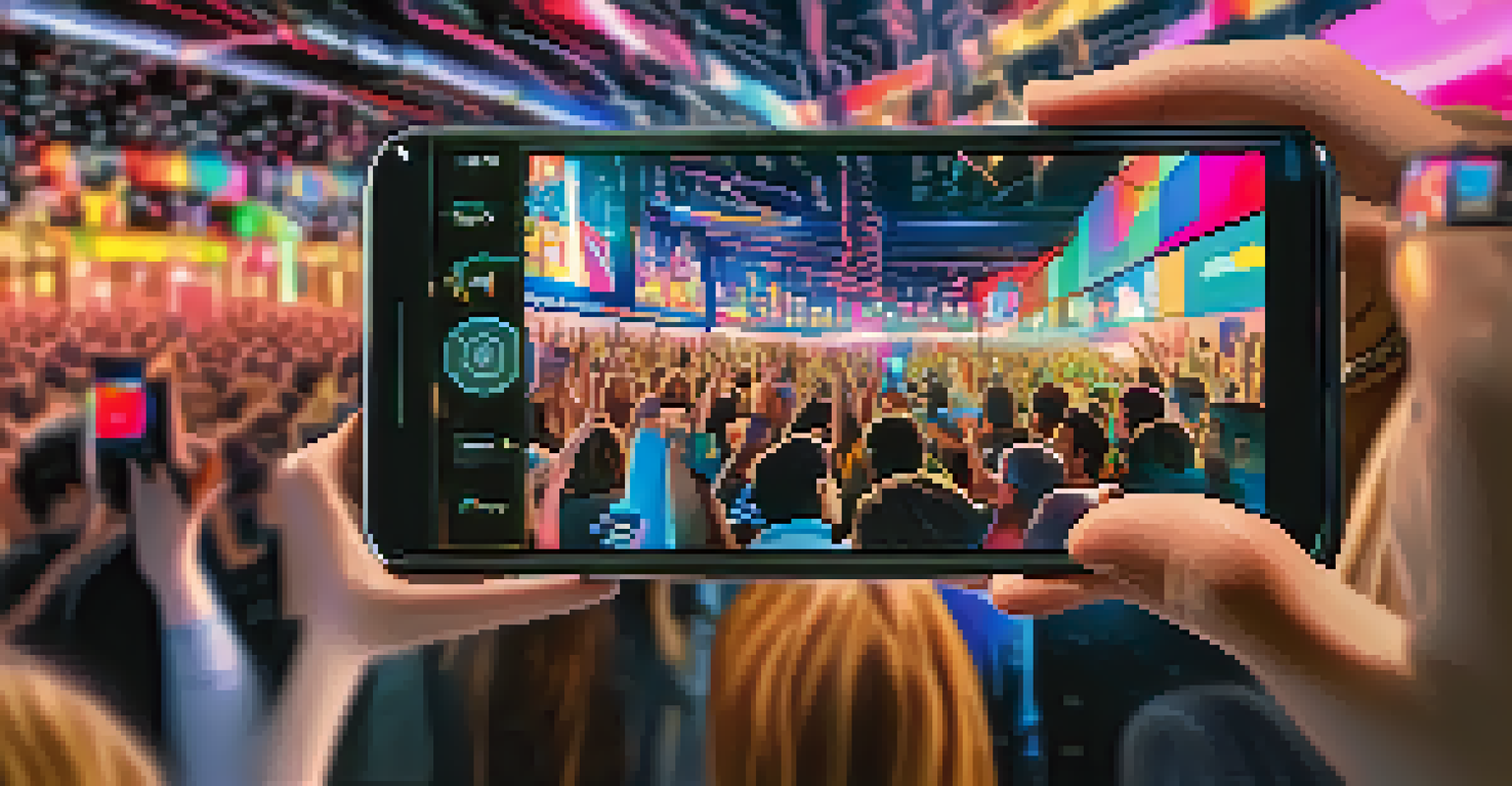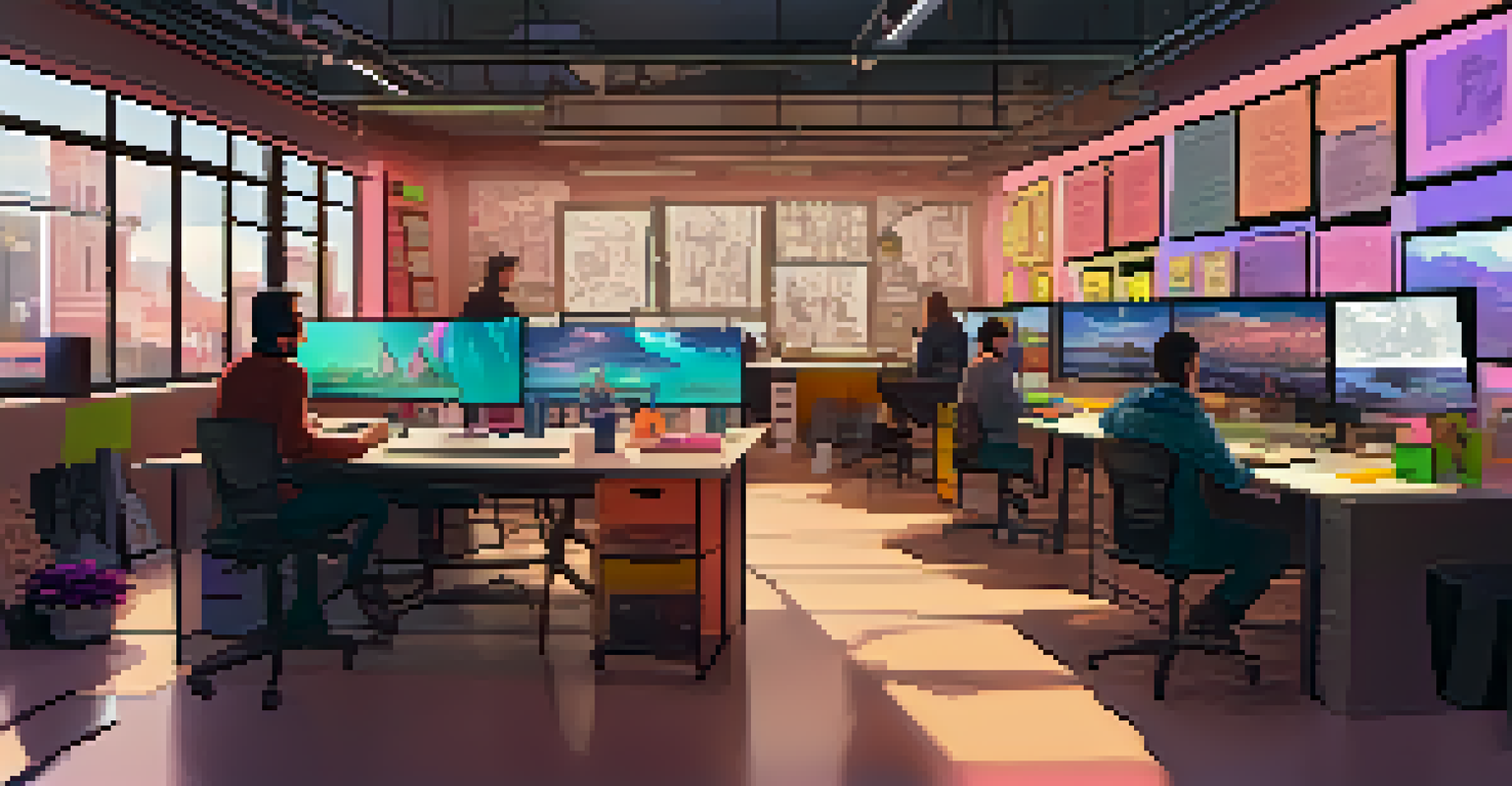The Rise of Interactive Music Videos: Engaging Audiences Creatively

What Are Interactive Music Videos and Why They Matter
Interactive music videos are a fresh take on traditional formats, allowing viewers to engage with the content actively. Instead of merely watching a video, audiences can make choices that influence the storyline or visuals, creating a personalized experience. This shift is significant because it caters to a generation that craves interactivity and immersion in their media consumption.
Music is the shorthand of emotion.
For example, consider the groundbreaking work of artists like Björk and OK Go, who have embraced this format to enhance their storytelling. Their videos invite viewers to click, swipe, or navigate through multiple paths, making the experience unique for each viewer. This level of engagement not only keeps audiences entertained but also fosters a deeper connection to the music and the artist.
As technology advances, the potential for creative expression through interactive music videos grows, and this trend is likely to continue shaping the music industry in exciting ways. Artists and filmmakers are recognizing that creative storytelling can be elevated when the audience becomes an active participant.
The Tech Behind Interactive Music Videos
Creating an interactive music video involves a blend of technology and creativity, often utilizing platforms like HTML5, VR, and gamification techniques. These tools allow artists to craft experiences that are not only visually stunning but also functionally engaging. The use of responsive design ensures that viewers on different devices have a seamless experience, whether they’re on a smartphone or a desktop.

Moreover, analytics play a crucial role in this genre. By tracking how viewers interact with the video, artists can gather insights into audience preferences and behaviors. This data can inform future projects and marketing strategies, making the creation of interactive content not only an artistic endeavor but also a strategic one.
Engagement Through Interactivity
Interactive music videos transform viewers into active participants, deepening their emotional connection to the music.
As technology continues to evolve, we can expect even more sophisticated tools that will empower artists to push the boundaries of music videos. The intersection of technology and art opens up endless possibilities for innovative storytelling and audience engagement.
The Impact of Interactivity on Audience Engagement
Interactivity in music videos significantly boosts audience engagement, transforming passive viewers into active participants. This shift changes the way audiences consume music, as they become more invested in the narrative and emotional journey of the song. The act of making choices can create a sense of ownership over the experience, deepening their connection to the music.
The best way to predict the future is to create it.
For instance, a viewer might choose different paths in a video, leading to varied endings or visual experiences. This not only enhances enjoyment but also encourages repeated views as fans explore all possible outcomes. As a result, artists can cultivate a loyal fan base eager to share their unique experiences on social media.
Furthermore, the emotional impact of interactive elements can be profound. When audiences feel that they have a say in the story, they are more likely to form a lasting bond with the artist and their music, ultimately driving sales and creating a community around the work.
Case Studies: Successful Interactive Music Videos
Several artists have successfully harnessed the power of interactive music videos to great effect. One notable example is the band Twenty One Pilots, whose video for 'Level of Concern' allowed fans to interact with various elements, creating a dynamic viewing experience. This innovative approach not only captivated fans but also sparked discussions and engagement across social media platforms.
Another standout is the interactive video for 'The 1' by Taylor Swift, where viewers could explore different scenes and narratives related to the song. This level of engagement encouraged fans to dive deeper into the song's themes and meanings, fostering a more profound appreciation for her artistry.
Technology Enhances Creativity
The use of advanced technology like HTML5 and VR allows artists to craft visually stunning and engaging interactive experiences.
These examples illustrate how interactive music videos can enhance storytelling while boosting fan engagement and satisfaction. As artists continue to experiment with this format, we can expect even more groundbreaking content that resonates with audiences.
The Role of Social Media in Promoting Interactive Videos
Social media platforms play a pivotal role in the success of interactive music videos by providing a space for sharing and discussion. Artists can leverage platforms like Instagram, TikTok, and Twitter to tease interactive elements, encouraging fans to engage before the video even drops. This pre-release buzz can lead to heightened anticipation and viewership.
Once released, social media serves as a vital tool for audience interaction. Fans often share their unique experiences and choices made during the video, creating a ripple effect that attracts new viewers. The sharing of personalized experiences enhances the sense of community among fans and fosters a deeper connection to the artist.
Additionally, social media analytics offer valuable insights into audience engagement, helping artists refine their strategies for future projects. By understanding what resonates with fans, they can create more targeted content that enhances viewer interaction and satisfaction.
Challenges in Creating Interactive Music Videos
While interactive music videos offer exciting opportunities, they also come with their set of challenges. One significant hurdle is the complexity of production, which often requires a larger budget and a skilled team to execute effectively. The need for advanced technology and creative storytelling can make this format daunting, especially for emerging artists.
Moreover, ensuring a seamless user experience across various devices and platforms is critical. If viewers encounter technical issues or a complicated interface, it can lead to frustration and disengagement. Balancing creativity with usability is essential, as the goal is to enhance viewer experience, not complicate it.
Social Media Amplifies Reach
Social media platforms are essential for promoting interactive music videos, fostering community engagement and discussion among fans.
Lastly, there's the challenge of standing out in a saturated market. As more artists experiment with this format, it becomes increasingly important to create unique and compelling content that captures audience attention. Navigating these challenges requires a blend of innovation, strategy, and a deep understanding of the audience.
The Future of Interactive Music Videos
The future of interactive music videos looks promising as technology continues to evolve and audiences seek more immersive experiences. We can anticipate advancements in virtual reality (VR) and augmented reality (AR) that will redefine how music is consumed and experienced. Imagine attending a virtual concert where you can interact with the environment and even influence the performance.
Moreover, as artists become more familiar with the potential of interactivity, we might see an explosion of creativity in this space. New storytelling techniques and interactive elements could emerge, allowing for even deeper emotional connections between artists and their fans. The possibilities are endless, and artists who embrace this trend will likely lead the charge in reshaping the music industry.

Ultimately, as audiences continue to demand more engaging and personalized experiences, the rise of interactive music videos will likely play a crucial role in how music is produced, marketed, and consumed in the years to come.